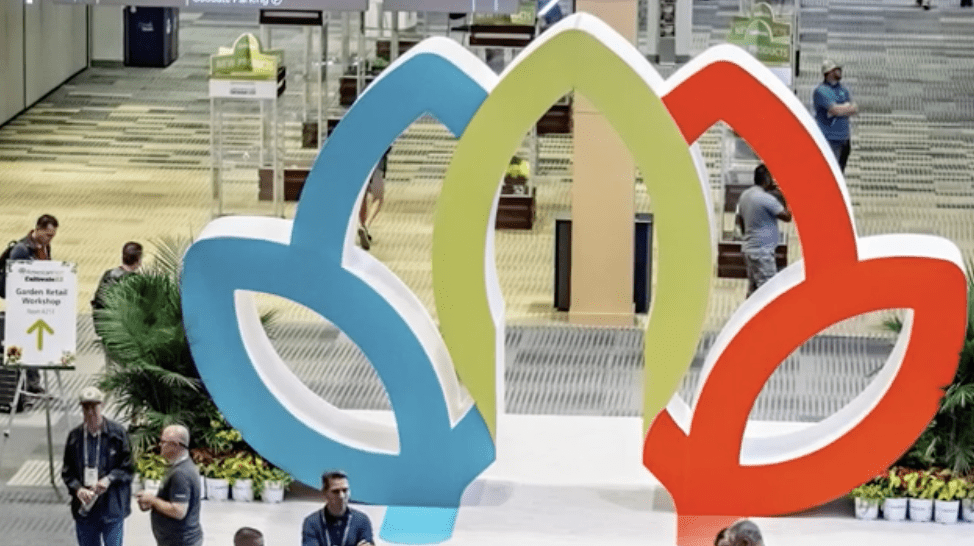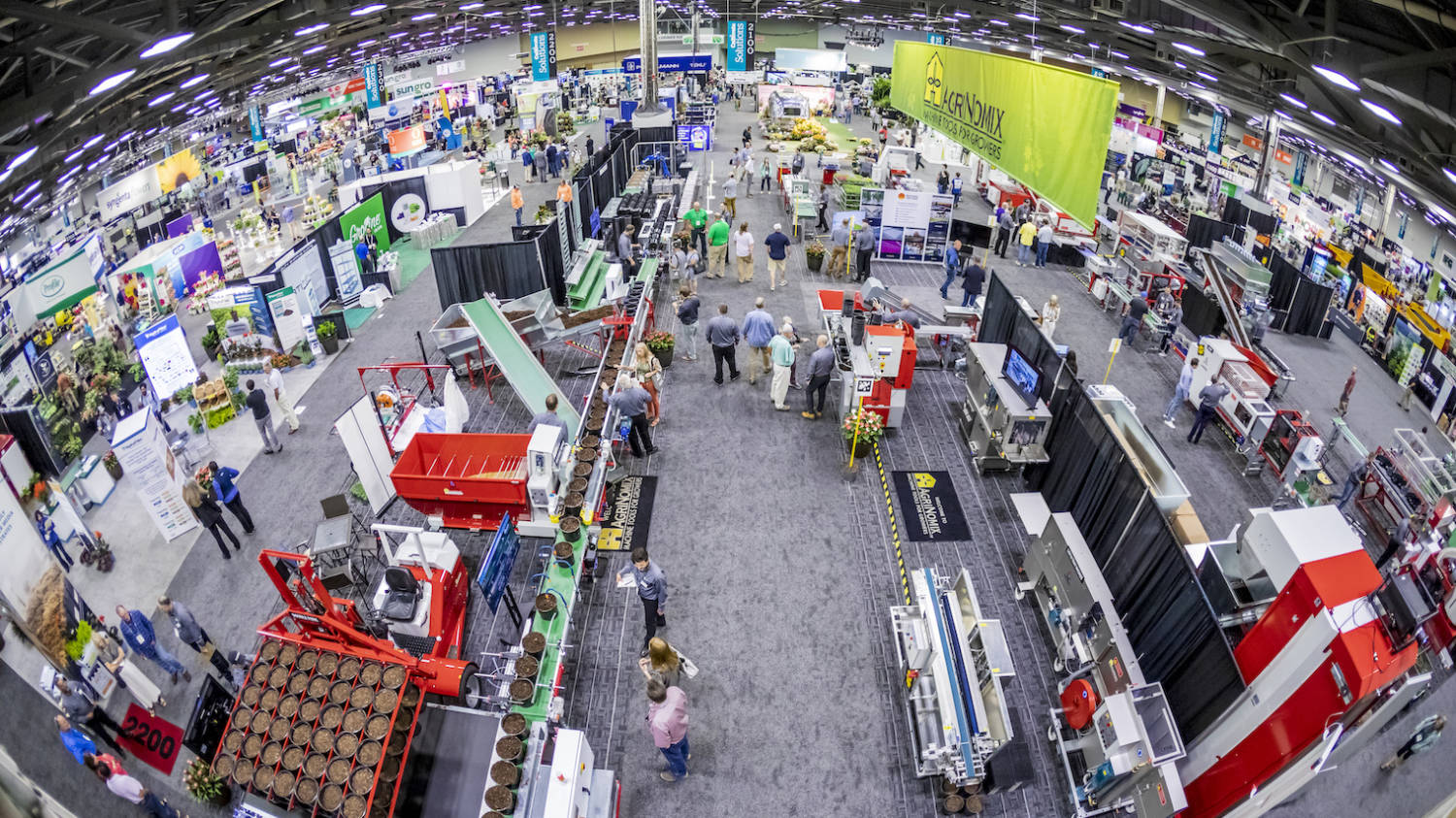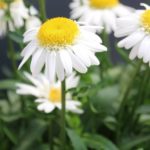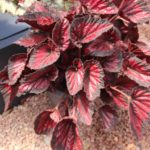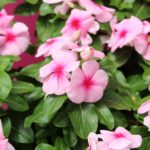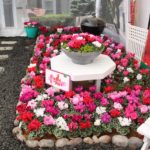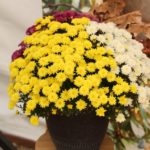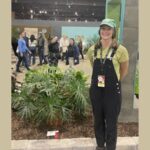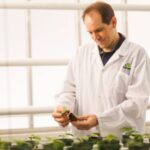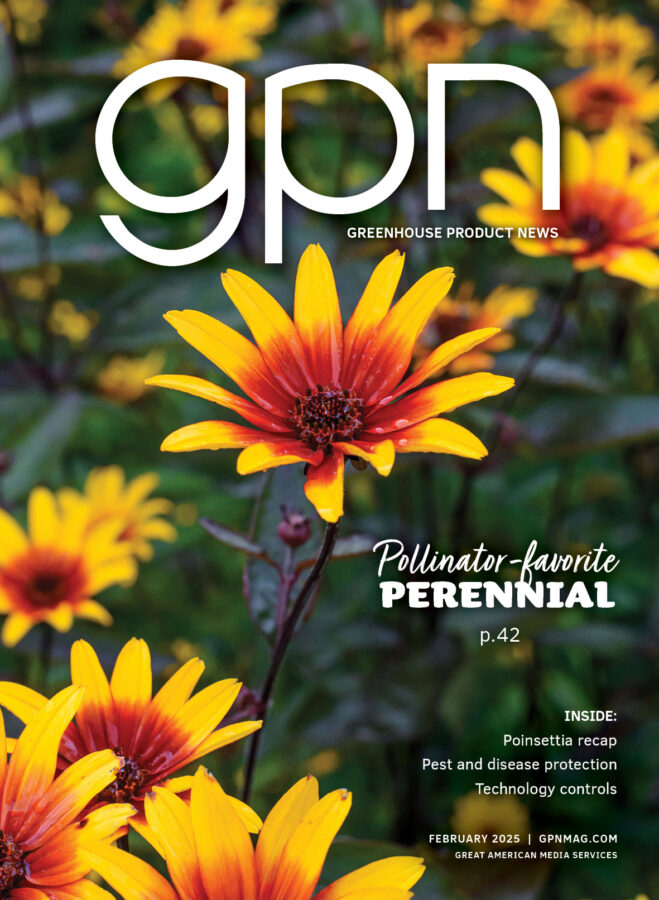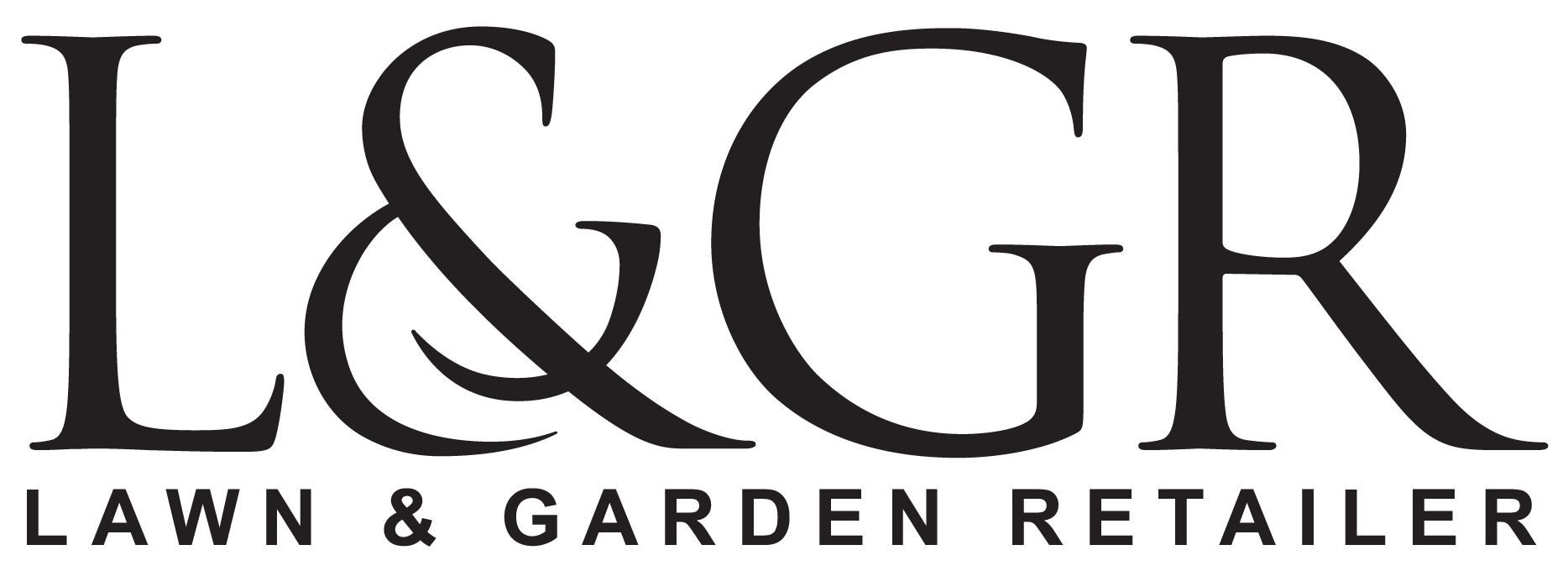Economics of Starter Plant Material Options
Growers are looking for new ways to save on labor and production costs. With options including direct sticking (transplant), callused cuttings, unrooted cuttings (URCs) and liners of different sizes, the decision on the most profitable starting plant material to use in different situations can be a challenge.
At the University of Florida, we are running production trials and developing costing models to compare URCs, callused cuttings or liners. In the October issue of GPN, we presented results from experiments with bracteantha, osteospermum, pelargonium and scaevola.
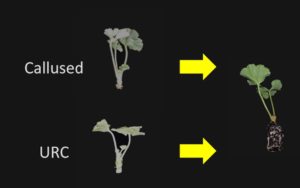
To produce a rooted liner (Figure 1) from a callused cutting reduced production time by an average of one week compared with a URC, and had less shrinkage (0.7 percent) compared with 4.5 percent with URCs.[/caption]
To produce a finished flowering pot (Figure 2) the most feasible options were transplanting a rooted liner into the final container, or direct transplant of a callused cutting. Direct transplant of callused cuttings required an average of 24 days longer than transplanting a rooted liner to produce a shippable flowering container. Callused cuttings had 0.5 percent shrinkage, with no shrinkage for rooted liners. Direct transplant of URCs was not considered feasible because of a high shrinkage rate (11.9 percent) and long production time (30 days more than a rooted liner).
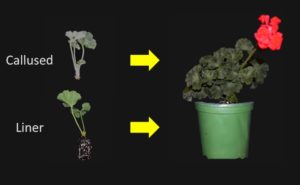
In this article, we discuss how to calculate the economic effect of these options on cost and profitability. You can use this type of analysis for your own production decisions.
PRODUCING A ROOTED LINER FROM A CALLUSED OR UNROOTED CUTTING
When deciding whether to produce a rooted liner tray from callused versus unrooted cuttings, three variables help when making the decision on which plant material to use:
1. Plant material cost.
2. Number of days to obtain a rooted liner. The longer the time period, the higher the area-time required. If square foot week (sfw) is used to allocate overhead based on production space and crop time, this cost will increase.
3. Shrinkage (crop losses), which impacts all costs, including direct costs related to transplanting such as cost per cutting, container, growing media, and labor to transplant and also overhead cost per unit sold.
Taking these considerations into account, to break even the extra cost of the callused cutting has to be covered by the reduction in shrinkage and/or the reduction in production time. To obtain an accurate estimate of costs and benefits, it is necessary to calculate a detailed enterprise budget for the varieties we want to analyze.
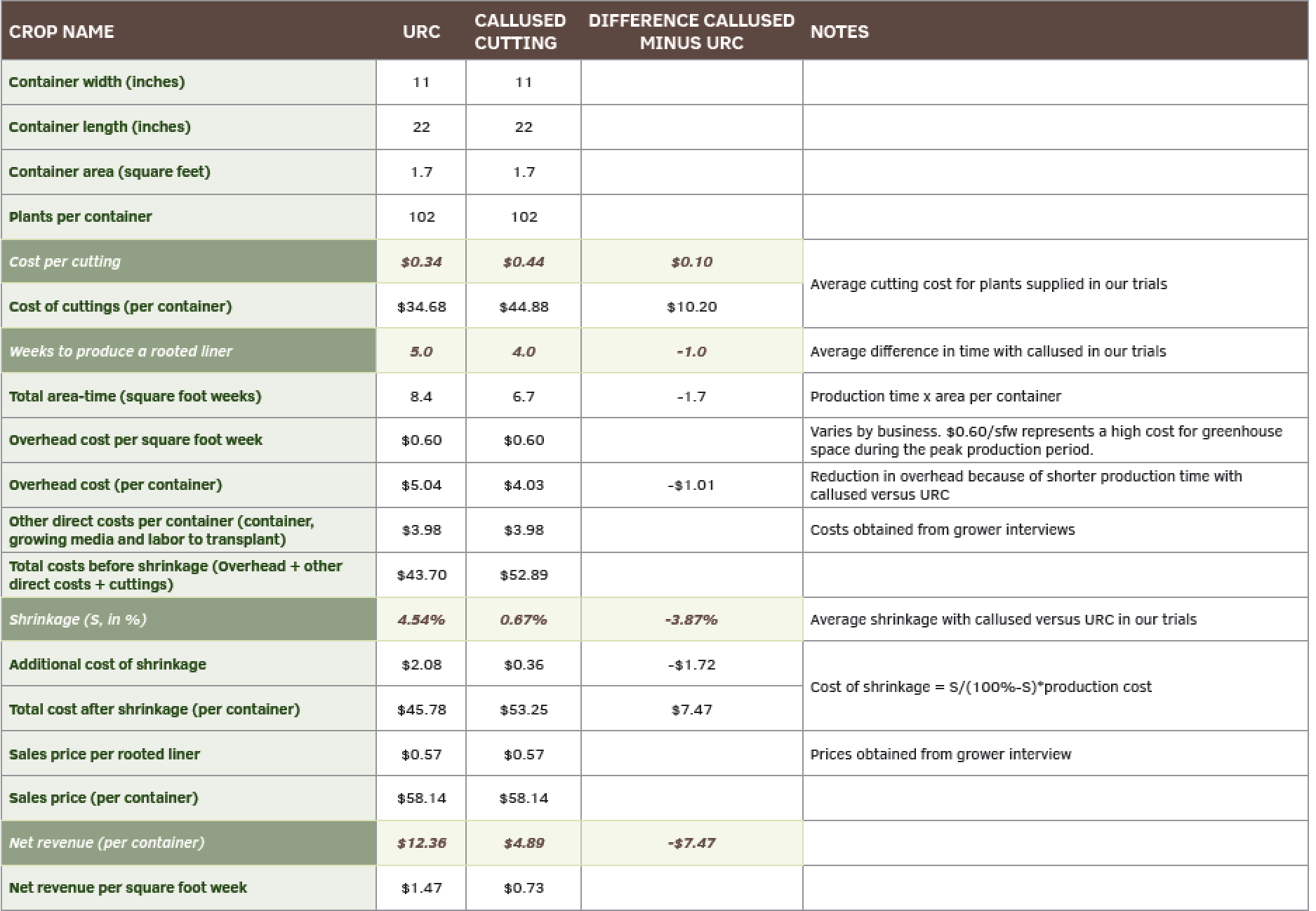
Table 1 shows a simplified budget for producing a tray of rooted liners. Values for production time and shrinkage are based on the average of 16 crops of four species (bracteantha, osteospermum, scaevola and pelargonium) grown over two years at the University of Florida.
In this example, the callused cuttings are assumed to cost $0.10 more than URC on average (based on information from cutting suppliers), and callused cuttings finish one week earlier than URC and have 3.9 percent less shrinkage (averages from our trial). As with any budget, the results completely depend on the assumptions but the analysis is intended to provide a framework for your own calculations.
With this set of assumptions:
• The higher cost for callused cuttings increases the total plant material cost by $10.20 per 102-count tray.
• The shorter production time by one week reduces the overhead cost by $1.01 assuming the overhead cost per square foot week is $0.60. Even assuming no overhead cost per sfw, URCs would still be favored because of lower plant material cost.
• The 3.9 percent less shrinkage from callused cuttings saves $1.72 in cost.
• Overall, the net revenue was higher with URC compared with callused cuttings by $7.47 per tray.
• The net revenue per unit of space and time (sfw) was also highest with URC which is important during the peak production season when the goal is to generate revenue in a way that is very efficient in space and time use.
Producing a rooted liner tray from URC would be more profitable with this set of values. However, using a callused cutting would be favored if:
• Shrinkage with URC is higher. For example, if shrinkage was 18 percent, then the cost would break even using callused cuttings at $0.10 extra.
• With a lower cost per callused cutting compared with URC. Varying only price in Table 1, callused cuttings would need to only cost $0.03 more than URC to break even.
• The production time is much shorter with callused cuttings. Production time would need to be very short — only two weeks — for callused cuttings to break even.
• If available mist space was limited during the peak, callused cuttings only required a day under mist before being moved off mist, compared with several days for URCs. In that situation, callused cuttings may allow an increase in total production numbers.
PRODUCING A FINISHED FLOWERING POT
To produce a finished flowering plant, we need to consider higher shrinkage and longer production time when using a callused cutting but a lower plant material cost compared with rooted liners. The average values from our trials are summarized in Table 2. With these assumptions:
• Callused cuttings were $0.13 less expensive than rooted liners.
• The longer production time by three weeks increased the overhead cost by $0.45.
• The 0.5 percent higher shrinkage from callused cuttings increased cost by only $0.01. Shrinkage was low for both plant types, however at a commercial scale there is probably less risk of quality issues from rooted liners than callused cuttings because rooted liners have developed past the sensitive initial rooting phase.
• Overall, the net revenue was higher with rooted liner compared with callused cuttings by $0.33 per pot.
• The net revenue per unit of space and time (sfw) was also highest with rooted liner.

Producing a finished flowering pot from a rooted liner would be more profitable with this set of values. However, using a callused cutting would be favored if:
There was a high price difference — rooted cuttings were much higher than a callused cutting.
• The callused cuttings required only one more week of production time compared with the rooted liner.
• The overhead cost per square foot week is very low. This may be the case during the off-season when space and time are not limiting. In that situation, the low direct cost of a callused cutting means the gross margin (sales minus direct costs) favors a callused cutting. This is the situation in the summer when many growers directly transplant poinsettia or chrysanthemum cuttings into the finished pot rather than using more expensive rooted liner starting plants.
CONCLUSIONS
Overall, we conclude that the main situation where it is profitable to use a callused cutting to produce a rooted liner tray is when there is high shrinkage from URCs. Some plant varieties do not ship well from the cutting supplier to the propagation greenhouse. For a plant variety that has low rooting percentage, it could be more efficient for the offshore supplier to grade out weaker cuttings that do not produce callus and thereby increase rooting percentage at the propagation greenhouse.
If the propagation greenhouse has limited mist space, liner trays with callused cuttings could also be more quickly moved to a lower-cost finishing zone than URCs.
For producing flowering potted plants, it depends on the season and grower objectives when deciding between callused cuttings and rooted liners. During the peak season when short crop times is critical to maximize return per square foot week, rooted liners will often be favored. In the off-peak period when space and time are not limiting, the lower material price of callused cuttings is favored.
An important analysis we have not included here is the comparison between direct transplant of callused cuttings versus starting your own rooted liners from URCs and then transplanting into the finished pot. Direct transplant can reduce labor and material costs by eliminating the rooted liner step. However, you need to carefully budget out the costs of both liner and finished plant steps, and cost out processes such as transplanting, grading, and transporting.
The example budgets presented are only one set of assumptions intended to illustrate the factors that should be considered when choosing your starting plant material. We encourage you to run your own analysis. For more information and training, we recommend our Costing and Profitability course available at hort.ifas.ufl.edu/training.
Acknowledgements: We thank the industry sponsors in the Floriculture Research Alliance (floriculturealliance.org) and USDA-ARS Floriculture and Nursery Research Initiative #58-3607-8-725 for supporting this research, Knox Nursery for providing Ellepots, and Ball FloraPlant and Dümmen Orange for cuttings.

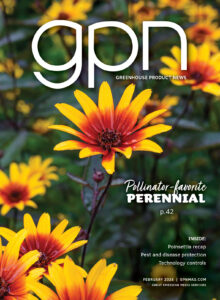
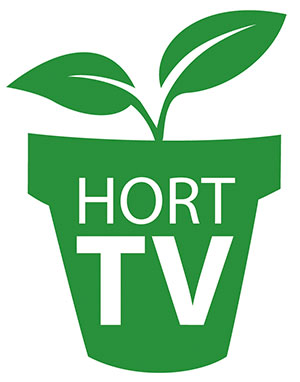 Video Library
Video Library 